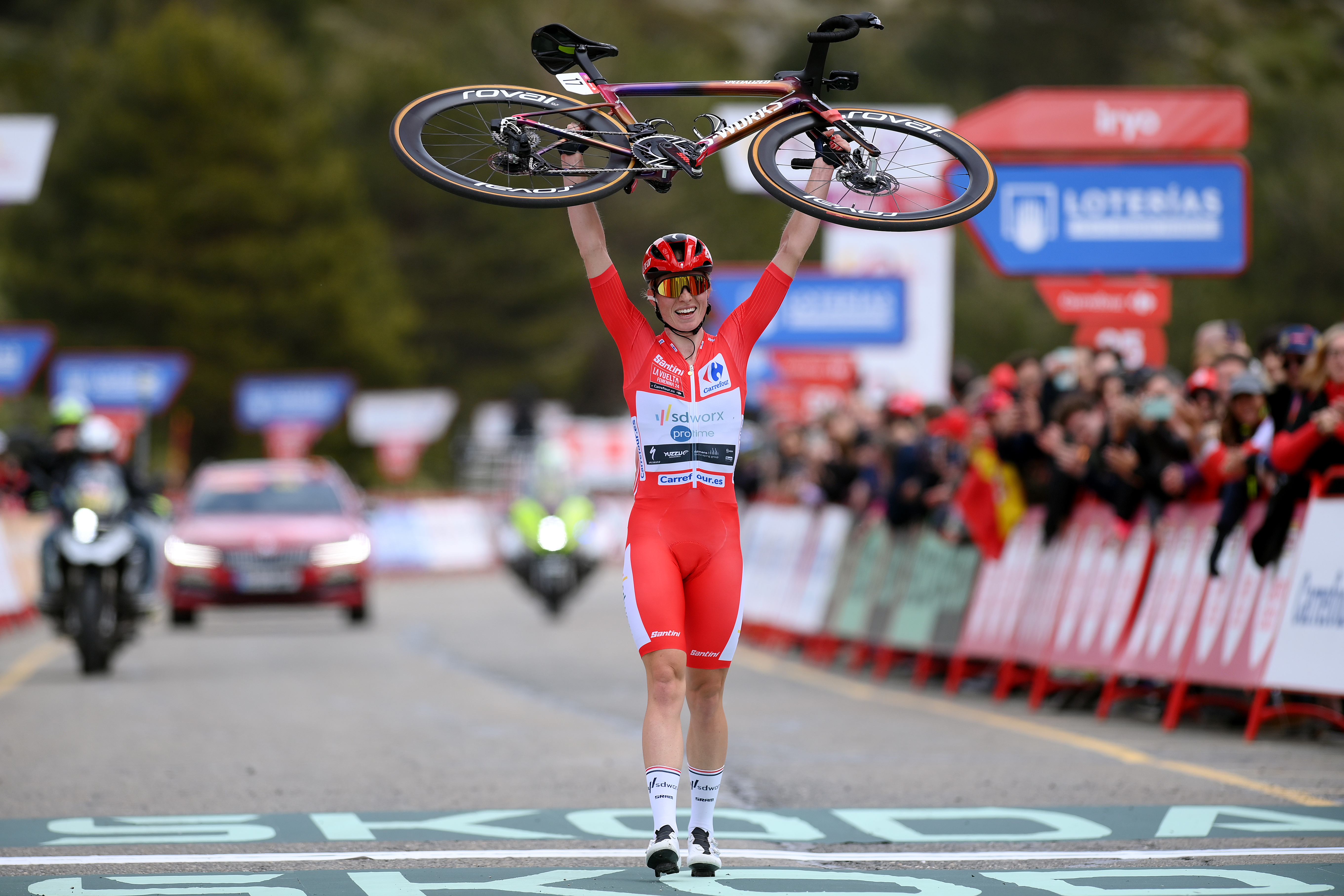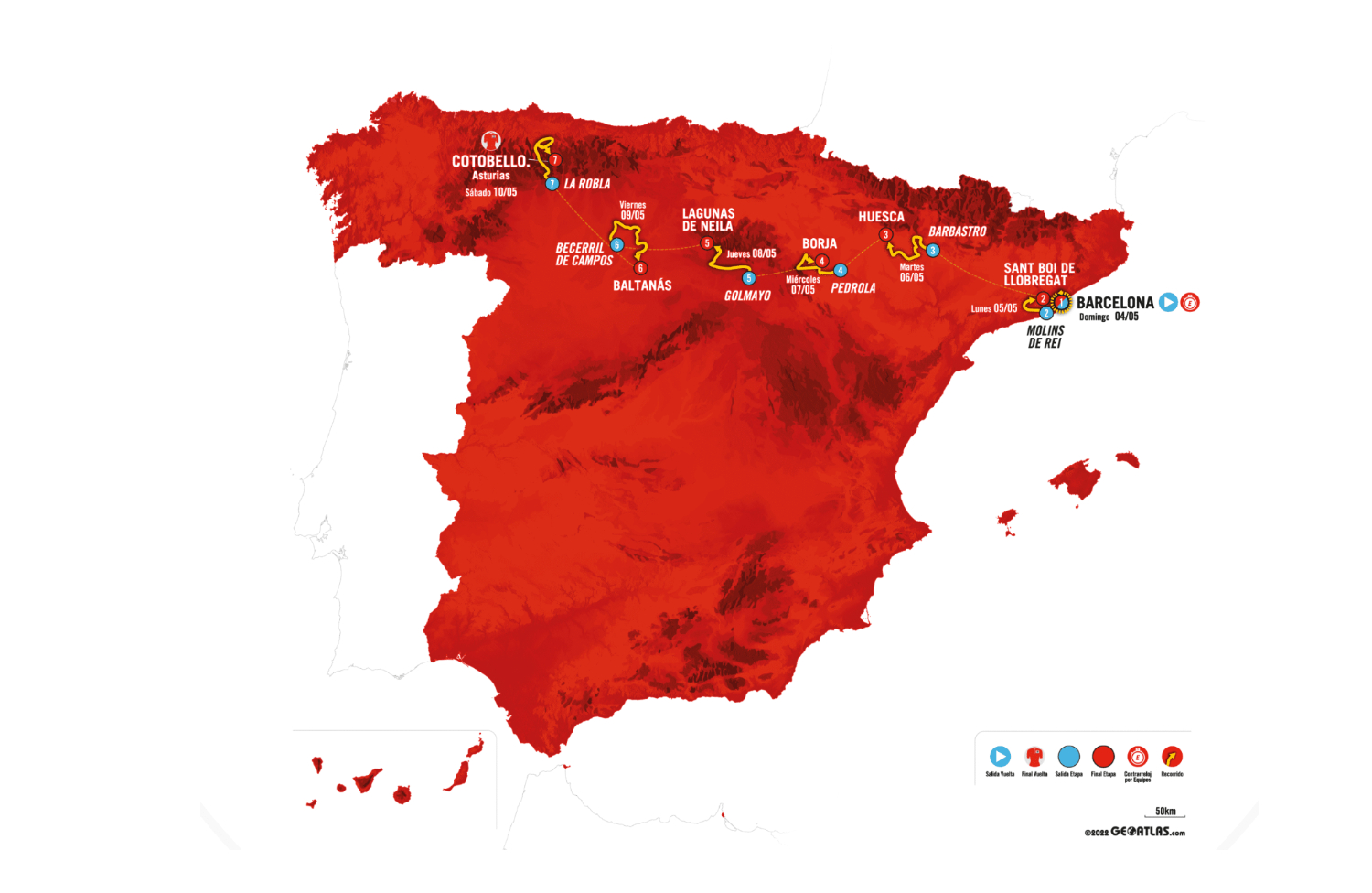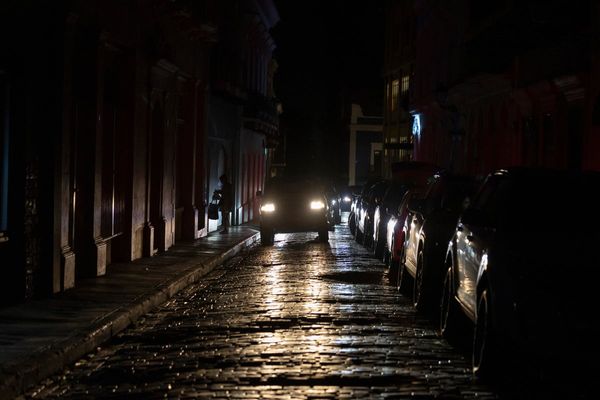
Dates: 4-10 May 2025
Total distance: 748km
Start: Barcelona
Finish: Cotobello
This year’s Vuelta Femenina by Carrefour.es will culminate in its most challenging finale yet, the race organisers have revealed.
During a presentation in Barcelona on Monday evening, the seven-day route for this May’s 11th edition was unveiled, set to build to a crescendo in the mountains of Asturias. The final stage will host a summit finish on the category-one climb of Cotobello, with more than 2,500m of elevation throughout the day, making it the hardest ever finale in the race’s history.
As was already announced in January, this year’s Vuelta Femenina will begin in Barcelona, a city that “breathes cycling”, according to the organisers. Stage one will be a team trial, 8km in length, starting outside Antoni Gaudí’s Casa Milà, a celebrated landmark.
Barcelona also hosted a team time trial on the first day of the men’s Vuelta a España in 2023, and will do the same when it welcomes the Tour de France Grand Départ in 2026.
Stages two, three, and four bring rolling terrain, heading west across the north of Spain. Finishes in Sant Boi de Llobregat, Huesca and Borja will offer opportunities for the sprinters and breakaway hopefuls, before the first mountains test on day five, which finishes on the category-one Lagunas de Neila.
There will be some respite for the GC hopefuls with a flat stage on the penultimate day, stretching from Becerril de Campos to Baltanás. The final stage, the race’s longest at 152km, is also its hardest, counting three climbs – the category-two Alto de la Colladona, category-one Alto de la Colladiella, and finally the category-one Cotobello.
The curtain-closing climb is 10km long, pitched at an average of 8.3%, with ramps up to 14.5%. It is here that the race will be decided, and the winner of the red jersey crowned.
In a statement released by the race organisers, the final stage was described as the race’s “hardest stage ever”. Previously known as the Madrid Challenge, and then the Ceratizit Challenge, the event was first launched in 2015, moving up to eight stages in 2024.
This May’s edition will be one day and 120km shorter than last year’s. It is the third longest race on the women’s calendar, behind the Giro d’Italia Women (939.6km) and the Tour de France Femmes avec Zwift (1,165km).
Last year’s Vuelta Femenina was won by then SD Worx-Protime rider Demi Vollering, who is expected to defend her title this spring in her new FDJ-Suez team colours.
“From the Mediterranean to the Asturian mountains, from the big cities to the small towns that make up our territory, we will cover Spain’s geography in order to continue enjoying the best cyclists, to continue growing and, above all, to continue writing the history of our race,” a statement from the Vuelta Femenina read.
Vuelta Femenina 2025 Route Map








